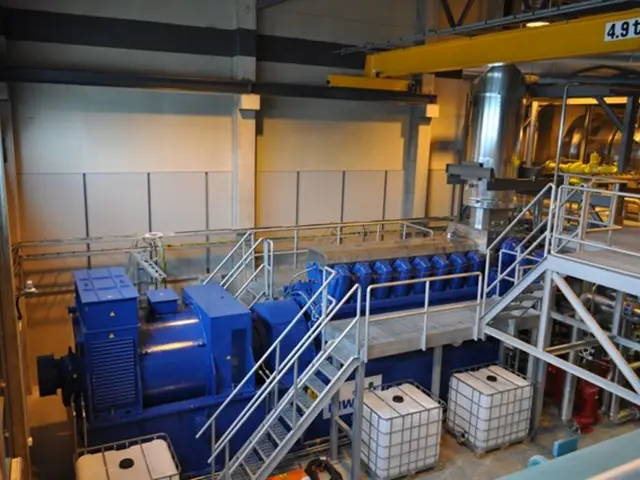Data and Artificial Intelligence serve as the foundation of DLA's digital strategy
The Defense Logistics Agency (DLA) is embarking on a significant digital transformation, with artificial intelligence (AI) serving as a cornerstone of its strategy. This shift is part of the agency's 2025-2030 Strategic Plan, which is built upon four pillars: People, Posture, Precision, and Partnerships.
Brad Bunn, DLA's vice director, emphasized the importance of these priorities in addressing supply chain challenges and supporting the joint force. Army Lt. Gen. Mark Simerly, DLA's Director, underscored the urgency to support innovation and mission excellence.
A key aspect of this modernization effort is the focus on understanding customer requirements before they are even identified. DLA aims to improve forecasting and planning using AI, with a goal of having a common digital thread for understanding supply chains, from the factory to the foxhole.
The modernization of nine supply chain systems is crucial for DLA to move faster, think smarter, improve data integration, and increase responsiveness and resilience. This overhaul would also increase visibility of the data thread, from the commercial side to the end user.
One of the benefits of this modernization effort is improved inventory management and auditability for financial management. It could also enhance customer service by providing more accurate and timely deliveries. Furthermore, improved forecasting can help DLA send demand signals to industry, potentially reducing back orders for repair parts.
In addition to these improvements, DLA is also focusing on workforce transformation. This includes increasing the competency in understanding data and building data fluency among employees. The agency currently has about 56 AI models in development, testing, or use, all from employee-generated use cases.
However, DLA faces a $50 million budget cut next year compared to 2024. Despite this challenge, the agency is leveraging advanced technology in its storage and distribution network, similar to a tractor supply center, to streamline operations and improve efficiency.
Moreover, DLA is taking a bottom-up approach to AI, developing citizen developers within its workforce. This approach is aimed at protecting supply chains from cyber threats and other risks, as well as increasing the agency's overall resilience.
Stay updated on federal news by signing up for our daily newsletter.
Read also:
- The Cost of Speech is Zero, True Strength Lies in Unity
- Aiming to simplify the move towards cleaner automobiles, the newly established ministry plans to take direct action with Pannier-Runacher, Létard, and Vautrin at the helm.
- "The imperfect yet essential documentary, "Planet of the Humans," raises challenging and uncomfortable inquiries"
- Exciting Escapades of Tintin







